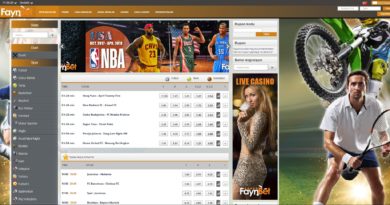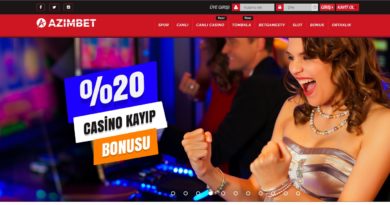Verywell Cashback vs Standard Casino Bonuses: Which Offers More Value?
When players navigate the complex world of online gambling, understanding the nuances of different reward programs becomes crucial. Two popular types of incentives—cashback rewards and standard casino bonuses—offer distinct benefits and challenges. While the example of verywell casino illustrates contemporary incentive structures, the core principles behind these offers reveal timeless strategies for maximizing value. This article explores how cashback rewards compare to traditional bonuses across various dimensions, providing practical insights for both novice and experienced players.
Table of Contents
How Do Cashback Rewards Enhance Player Returns Compared to Traditional Bonuses?
Analyzing the Impact of Cashback on Long-Term Profitability
Cashback rewards provide players with a percentage of their losses returned over a specific period, effectively acting as a risk buffer. Unlike traditional bonuses, which often require players to meet wagering requirements before withdrawal, cashback offers directly augment player bankrolls, especially during losing streaks. For example, a cashback rate of 10% on losses means that a player who loses $1,000 in a month receives $100 back, smoothing out the volatility inherent in gambling. Over time, such consistent recovery can significantly improve long-term profitability, especially for players with steady betting patterns.
Practical Examples of Cashback Effectiveness in Different Casino Settings
Consider a player who frequents both slot machines and table games. In a casino with a cashback scheme, their losses of $5,000 over a month could net $500 back, reducing their effective loss. Conversely, in a traditional bonus setup, the same player might receive a sign-up bonus of $200, which requires meeting high wagering thresholds before withdrawal. In high-traffic casinos with high turnover, cashback can sustain longer play sessions and better preserve a player’s bankroll, exemplifying its advantage in practical scenarios.
Limitations and Risks Associated with Cashback Programs
Despite their appeal, cashback programs are not without limitations. They often exclude certain games or have maximum payout caps. Additionally, cashback is typically calculated on net losses, which can incentivize riskier betting behavior, potentially leading to larger losses. Moreover, some casinos implement rollover requirements or restrict cashback eligibility to specific time frames, adding layers of complexity. As with any reward scheme, understanding the fine print is vital to avoid overestimating the value of cashback offers.
Cost Structures and Wagering Requirements: Which Offers Better Conditions?
Breakdown of Typical Wagering Rules for Both Bonus Types
Traditional casino bonuses often come with stringent wagering requirements, typically ranging from 20x to 50x the bonus amount. For example, a $100 bonus with a 30x rollover demands $3,000 in wagers before withdrawal. In contrast, cashback rewards generally do not impose such wagering conditions; instead, they are a percentage of net losses, making them more flexible. However, some cashback schemes might have minimum loss thresholds or time limits, which players should scrutinize.
Assessing Hidden Fees and Fine Print in Cashback Offers
While cashback appears straightforward, hidden clauses can diminish its value. For instance, some programs restrict cashback to certain game types, exclude high-volatility slots, or impose caps on maximum cashback per period. Additionally, some casinos charge administrative fees or require players to opt-in actively. These details can significantly influence the actual benefit derived from cashback programs and should be reviewed carefully before participation.
Comparative Analysis of Bonus Turnover and Payout Rates
| Feature | Traditional Bonuses | Cashback Rewards |
|---|---|---|
| Wagering Requirements | High (20x–50x) | Minimal or None |
| Player Risk | Front-loaded; risk on initial deposit | Risk shared; losses partially recovered |
| Time to Withdraw | After meeting wagering requirements | Immediately after losses are realized |
| Potential Payout Rate | Limited by rollover and caps | Dependent on loss frequency and cashback rate |
Influence of Player Behavior and Preferences on Bonus Effectiveness
How Player Betting Patterns Affect Bonus Value
Players who prefer high-volatility games, like certain slots, may find cashback more advantageous, as losses are recouped directly. Conversely, conservative players engaging in low-volatility games may benefit more from traditional bonuses, which can amplify their bankroll through free spins or match offers. Understanding personal betting patterns allows players to select rewards aligning with their gaming style, maximizing overall value.
Matching Bonuses to Different Gaming Styles for Maximum Benefit
For example, a player who enjoys quick, high-stakes spins might prioritize cashback programs that return a percentage of losses during rapid play sessions. Meanwhile, players who prefer strategic play on table games may find traditional bonuses more suitable, enabling them to meet wagering thresholds with smaller, more controlled bets. Tailoring reward programs enhances the efficiency of each gaming session and aligns incentives with individual preferences.
Case Studies of Player Strategies Leveraging Cashback Over Standard Bonuses
“One professional gambler optimized their bankroll by focusing on cashback offers, especially during streaks of losses, which allowed sustained play without risking large sums upfront. Their strategy involved tracking loss patterns meticulously and maximizing cashback eligibility, illustrating how understanding reward mechanics can turn the tide in favor of the player.”
Such case studies underscore the importance of aligning reward schemes with personal betting behaviors, transforming theoretical advantages into practical gains.
Industry Trends and Future Outlook for Reward Programs
Recent Data on the Adoption of Cashback Versus Traditional Bonuses
Recent surveys indicate a growing preference among online players for cashback programs, driven by their transparency and flexibility. Data from industry analytics reveal a 25% increase in cashback scheme adoption over the past three years, contrasting with a slight decline in traditional bonus offerings due to regulatory pressures and player dissatisfaction with wagering requirements.
Predicted Developments in Incentive Structures in Online Casinos
Future developments point toward more personalized reward programs, leveraging data analytics and AI to tailor incentives to individual player behaviors. Expect to see hybrid schemes combining cashback with traditional bonuses, providing a more balanced approach to value maximization. Such innovations aim to enhance player engagement while maintaining profitability for operators.
Impact of Regulatory Changes on Bonus Offerings and Player Benefits
Regulatory bodies increasingly scrutinize bonus wagering requirements, pushing casinos to enhance transparency and fairness. Legislation may restrict high rollover requirements and promote cashback schemes as fairer alternatives. Consequently, players can anticipate a landscape where cashback rewards become more prominent, fostering a more equitable environment for online gambling.
In conclusion, understanding the differences between cashback and traditional casino bonuses enables players to make informed decisions aligned with their gaming styles and risk appetite. While cashback rewards offer flexibility and long-term benefits, traditional bonuses can amplify short-term gains when used strategically. Staying informed about industry trends and regulatory changes further empowers players to optimize their gambling experience. Ultimately, selecting the right reward program is a key component of responsible and rewarding online gaming.


